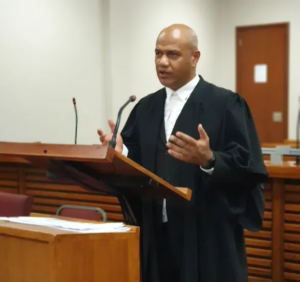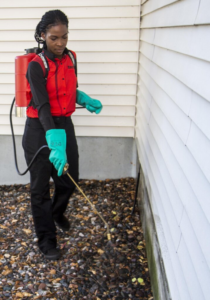Car accidents are common throughout and can leave victims with significant medical bills and property damage. An experienced car accident lawyer can significantly improve your chances of compensation for your hardships and losses.
Maryland Accident Lawyer should have extensive trial experience to help ensure that you receive appropriate compensation for your losses. A reputable attorney should have a track record and reputation to prove their abilities to prospective clients.

Proving fault in a car accident is crucial to obtaining compensation for medical expenses, property damage, and pain and suffering. However, this process can be complicated, as it requires collecting evidence, understanding the laws relating to your case, and often negotiating with insurance companies. A skilled lawyer can help you prove fault, maximizing your chances of a successful claim.
The first step in proving fault is gathering evidence at the accident scene. This includes photographs of the vehicles and any visible damage, witness statements, and a police report. The police report contains the officer’s observations, statements from the parties involved, and may even indicate which party he or she believes is at fault for the crash. Witness statements are also valuable because they can contradict the other driver’s version of events.
Other important pieces of evidence include skid marks, traffic signals, and road conditions. Often, these can indicate which party stopped their vehicle suddenly, or if the other driver failed to yield the right of way.
Finally, medical records can be used to establish a direct link between the at-fault driver’s actions and the injuries sustained by your client. This can strengthen the causation argument and increase your client’s compensation award.
Determining fault can be difficult, especially in complex situations such as rear-end collisions or sideswipe accidents. A lawyer with experience in these types of cases can make this process much easier and improve your chances of winning a fair settlement. They will review the evidence, interview witnesses, and hire accident reconstruction experts to analyze the crash and create simulations that can demonstrate what really happened. They will also consider whether comparative negligence laws apply and assess the adequacy of each party’s insurance coverage to meet potential damages.
Gathering Evidence
There are several types of evidence that may be needed in a car accident case. The most important is physical evidence, including skid marks on the road, damaged vehicles, and debris. Witness testimony is also important. Witness statements can help establish what happened and who was at fault in the crash.
It is also crucial to obtain a police report. The police report is an official document that includes valuable information about the accident, such as witness statements and a preliminary determination of fault. It will be helpful in establishing the facts of the case, which is crucial during negotiations with insurance companies and in court proceedings.
Another type of evidence that may be needed is medical records. These documents can show the extent of your injuries and their long-term impact on your life. This evidence is necessary for calculating your total costs of injury, which will be a factor in your claim for damages.
Medical bills and invoices will also prove to be useful in establishing the total cost of your injuries. Your lawyer will consider all of your current and future financial costs to build a strong case for your recovery.
The best way to collect this evidence is right at the scene of the accident. Take notes on your phone or use a notepad to record as much information as possible. Make sure you get the names and contact information of any witnesses, as well. It is also helpful to collect photos and videos of the scene, if possible.
Also, make sure to write down the time and date of the accident, as well as any other relevant information. If you are injured, it may be difficult to do this yourself, but an experienced attorney can assist. They will consult with expert witnesses, including accident reconstruction experts and medical professionals, to collect the evidence you need for your case. Having this supporting evidence will make it more likely that an insurance company will give you a fair settlement or win your case in court. It will also help to strengthen your argument against any assertions that you were at fault for the accident.
Gathering Witnesses
Witnesses are often the most helpful in establishing who was at fault for an accident. They can provide an unbiased account of events as well as fill in information gaps that may be missed by the people who were directly involved in the crash. It’s important to find witnesses as soon as possible after a car accident, however, because memories can fade quickly and what was fresh in their mind just after the incident could become muddled a short time later.
First-party witnesses are the ones who were in the accident itself – the drivers and passengers. They can offer a detailed account of the incident and what they observed, though their testimony may be more emotional since they were there in the thick of it all.
Third-party witnesses are bystanders, pedestrians, or anyone who was in the vicinity at the time of the accident. They are considered more objective than the first-party witnesses because they don’t have a direct stake in the outcome of the case. Their statements can help sway the insurance company or jury.
It’s important to interview witnesses as soon as possible after a car crash because they can be easily influenced by emotions and the recollection of the event is not always accurate. Ask them to describe what they saw, including any relevant details such as if one of the vehicles appeared to be speeding or driving recklessly prior to the collision. They can also be helpful in describing what they overheard others say immediately after the crash.
Lastly, get their name and contact information so you can follow up on their statement. Make sure you have their home, work, and cellphone numbers as well as any other way to reach them. Ask them to write down their observations in the form of a written statement, which can be submitted as evidence in court.
There are also video recordings from cameras on cars, smartphones, and even cameras in nearby businesses that can be very helpful in proving fault in an accident. These videos can be incredibly useful in establishing the chain of events leading up to the accident, so they are definitely worth collecting.
Negotiating with Insurance Companies
During the case building process, an attorney will negotiate with insurance companies to secure a fair settlement. They will take all economic and non-economic damages into account to ensure that their client receives the compensation they deserve. They can also file a lawsuit on their client’s behalf if a fair settlement cannot be reached out of court.
Insurance companies often try to settle car accident claims as quickly and cheaply as possible. They may offer a low initial settlement, which appears to be fair but is often much less than what the injured party deserves in terms of their long-term financial losses. They may also deny a valid claim, citing ambiguous policy language or minor technicalities as justification.
To maximize a claim, an experienced lawyer will help their clients understand all the ways that an accident has impacted their lives, including current and future medical treatment costs, lost wages, and emotional impacts such as pain and suffering. An attorney will also consider the cost of a car replacement, since many cars are ruined or damaged in accidents.
The attorneys at Sutliff & Stout have years of experience representing accident victims. We know how difficult it is to move forward after a car accident, especially when you are worried about paying your medical bills and car repairs. Our attorneys are committed to helping you get the money you need as soon as possible so that you can start living again.
Our attorneys are skilled negotiators who can stand up to the insurance company’s tactics and fight ruthlessly for your right to compensation. Our team will be by your side every step of the way, from negotiating with the insurer to filing a lawsuit if necessary. Contact us today to schedule a free consultation.
